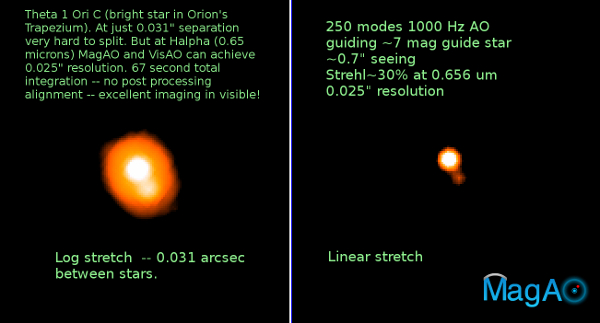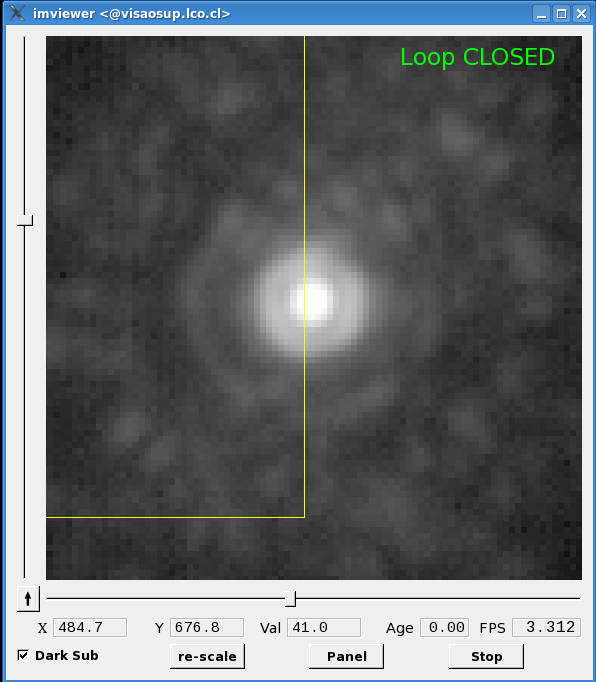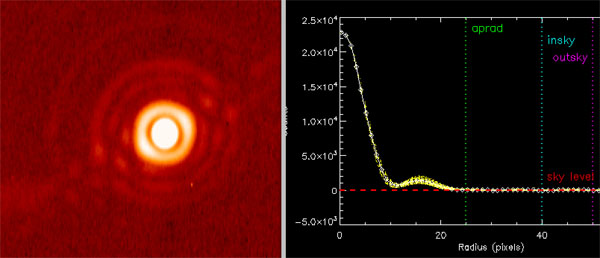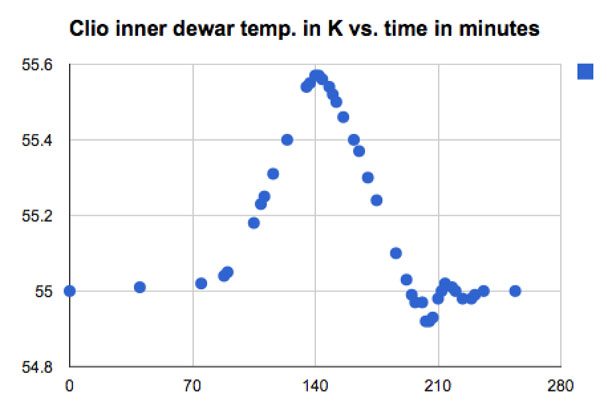Things are always exciting here on the MagAO project. But nothing – not earthquakes, viscacha attacks, not even non-orthogonal basis sets – can keep us from doing what we came here to do. Now that we are on-sky, we are taking advantage of the *amazing* 0.5 arcsecond seeing common at LCO to take some nice pictures. Last night we were looking at the Trapezium cluster to calibrate our plate-scales, and we took a few moments to take this image:

We didn’t cheat – no shift and add or other tricks.
After we solved last night’s communication problems, we did some engineering work, specifically getting Coma-offloading to work. I hate rotation matrices. Later, seeing calmed down, and we took some fantastic images. Here’s a screen grab from VisAO working at 0.982 microns. It’s a log stretch, and captures a single 0.28 second frame on a bright star.

And here’s our M-band PSF from tonight:

We tested turning off the Clio pump to reduce vibrations in the 25-milli-arc-second VisAO PSF. But since the Clio folks were observing at M-band, a 0.5-degree increase in temperature of Clio’s inner dewar caused a 3% increase in their thermal background. Therefore, we turned the pump back on again, and the sky background settled back down as the detector cooled. Here’s a curve showing the effect on Clio of turning off and on the pump:

Runa Briguglio, who is here from Florence helping us take care of the shell, suggests that we operate by this guideline:

Some quotes:
“If I’m doing what I think I’m doing, I’m an idiot. Yes! I’m doing what I think I’m doing!” – Glenn Eychaner, who came up the mountain today just to help us debug our TCS-MagAO communications problem. Thanks Glenn!